
Roots
The story of textured hair, particularly Black and mixed-race hair, is a deeply personal one, etched into the very fibers of our being. It is a story not solely of aesthetics but of survival, communication, and enduring identity. For generations, ancestral hair care practices, born from necessity and a profound understanding of natural elements, laid the groundwork for what we now understand as protective styling.
These age-old traditions, passed down through the gentle hands of mothers, aunties, and community elders, hold within their techniques the echoes of resilience and ingenuity. They represent a living archive, a rich legacy that speaks to more than just hair health; they whisper tales of cultural continuity, of wisdom preserved through the trials of time.
The very concept of hair protection, as practiced across diverse ancestral communities, was a symbiotic response to environment and daily life. Consider the scorching sun of the African plains, the drying winds, or the need for manageability during arduous labor. These conditions necessitated styles that safeguarded the delicate strands, locking in moisture and minimizing physical strain. The solutions devised were not accidental.
They were the product of careful observation, generational knowledge, and an intimate connection with nature’s offerings. What ancestral hair care practices influenced modern protective styling? It is the wisdom of these practices, the deep understanding of hair’s inherent needs, that provides the answer.
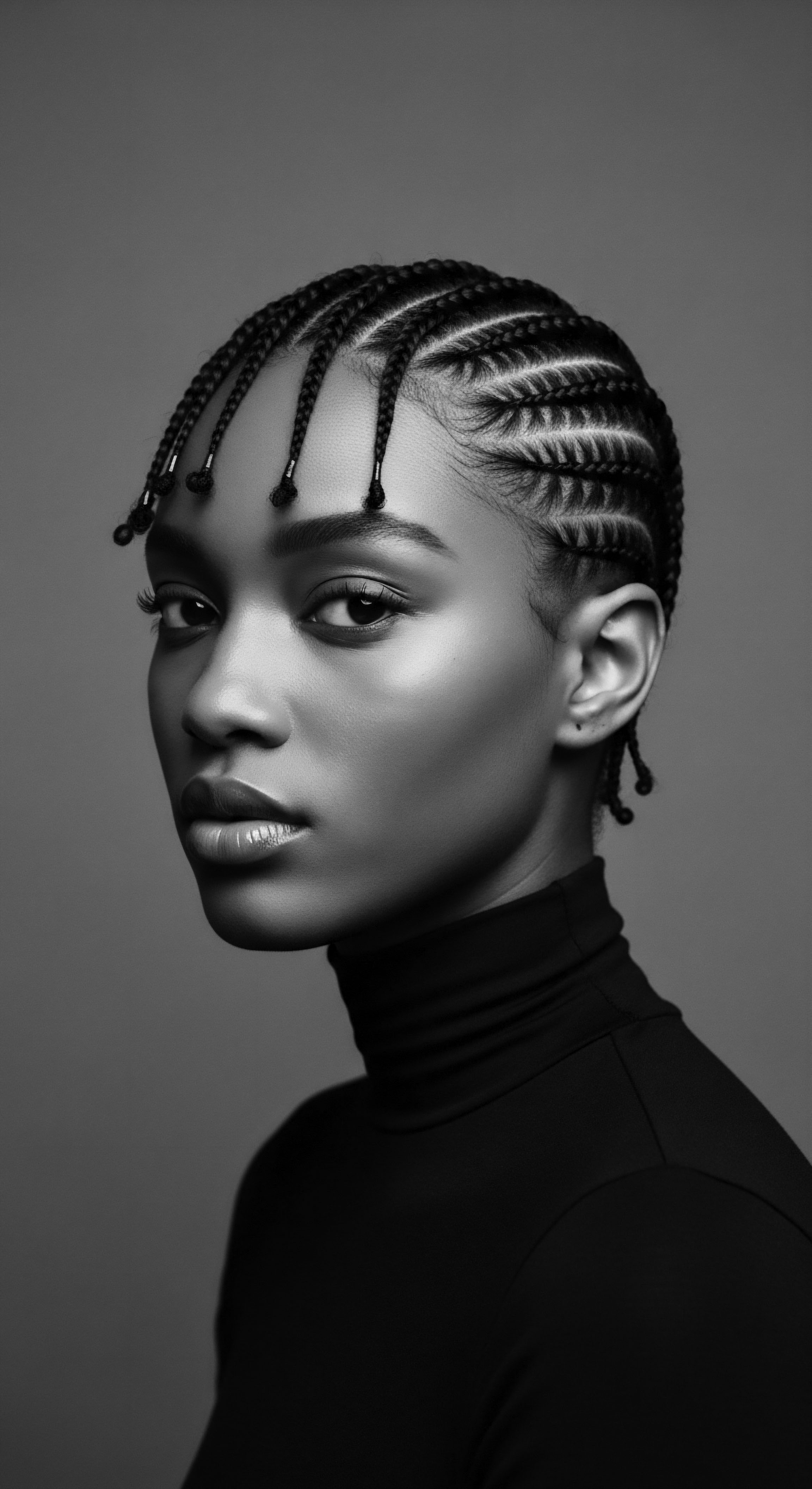
What is the Elemental Biology of Textured Hair?
Textured hair, with its unique helical structure, presents a biological paradox ❉ its exquisite curl pattern, while beautiful, also introduces points of vulnerability. The coils and bends along a strand mean that natural oils, produced by the scalp, struggle to travel the full length of the hair shaft. This characteristic leaves the ends often drier, more susceptible to breakage, and prone to tangling. The hair cuticle, the outermost layer of the hair, does not lay as flat as it might on straight hair, making it more open to environmental stressors and moisture loss.
Ancestral practitioners intuitively grasped these biological realities, even without the aid of microscopes. They understood that protection and moisture were paramount for hair’s vitality. The practices they cultivated were, at their core, biological interventions designed to mitigate these vulnerabilities.
The diversity of textured hair within the Black and mixed-race diaspora is remarkable. From loose waves to tightly coiled patterns, each strand possesses a unique identity, yet all share a common need for attentive care. This biological reality necessitated a range of adaptive practices, each tailored to specific hair textures and environmental demands. The ancestral lexicon of hair, thus, was not just about styling; it was a language of care, of understanding the very texture and needs of each individual’s hair.
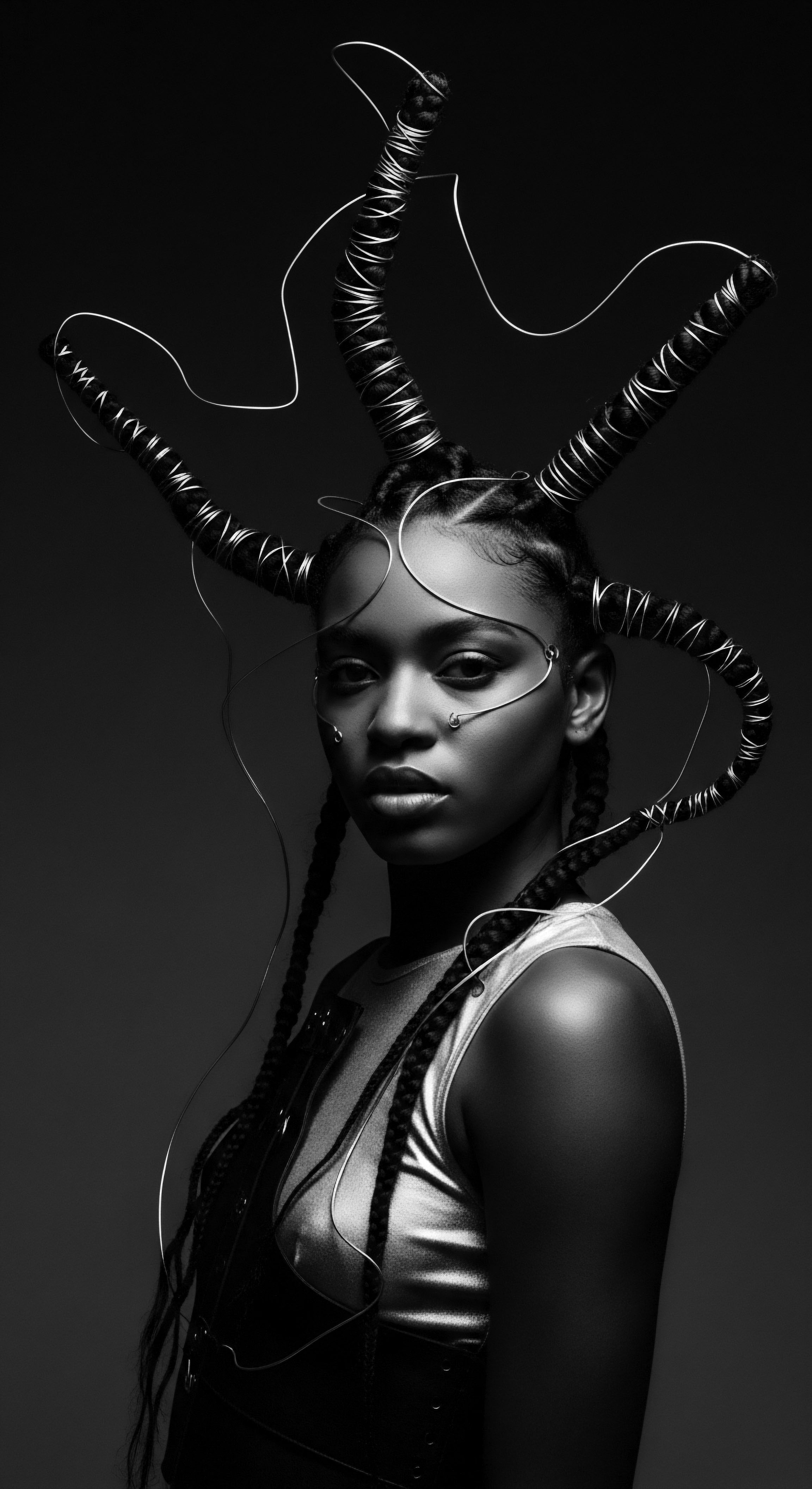
How Were Early Ancestral Classifications Used?
Long before modern classification systems, ancestral communities possessed their own nuanced ways of categorizing hair. These distinctions, unlike contemporary numerical systems, were often steeped in social, spiritual, and functional meanings. Hair texture, length, and style served as visual markers of identity, indicating a person’s age, marital status, tribal affiliation, social standing, or even their spiritual connection.
For instance, archaeological evidence from ancient Egypt shows elaborate wigs and hair extensions, indicating status and protection from the harsh desert climate. In many West African societies, the intricacy of a braided style could speak volumes about one’s community standing or readiness for marriage.
This traditional understanding of hair extended beyond mere appearance. Hair was often considered a conduit to the divine, the most elevated part of the body, believed to hold spiritual power. The act of hair dressing itself was a communal ritual, a moment for bonding and the transmission of generational wisdom.
The knowledge shared during these sessions encompassed not only styling techniques but also the properties of specific herbs, oils, and butters that would nourish and protect the hair. The focus was on holistic wellbeing, where hair health was interwoven with spiritual harmony and social cohesion.
Ancestral hair practices embodied a deep intuitive understanding of textured hair’s inherent needs, prioritizing protective measures to sustain its vitality against environmental challenges.
The evolution of specific terms for hair care practices and styles also points to this rich historical context. Words like “cornrows,” although now commonly used, have roots in the agricultural fields where enslaved people labored, highlighting the practical yet symbolic function these styles adopted. The underlying principle, however, remained constant ❉ to safeguard the hair. These elemental understandings, far from being simplistic, were highly sophisticated adaptations that laid the foundation for every modern protective style we recognize today.
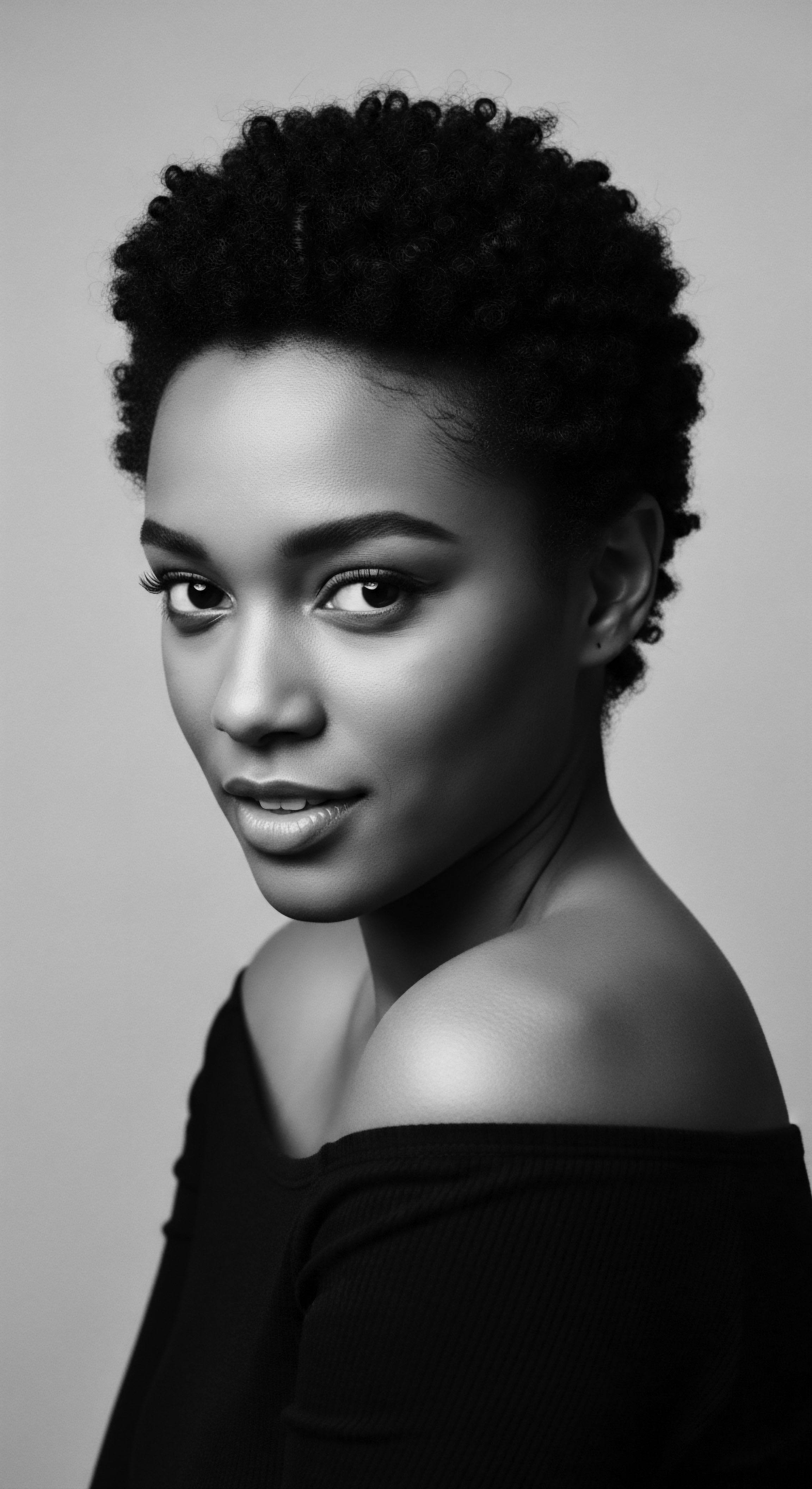
Ritual
The passage of time has only deepened the reverence for textured hair, and the rituals surrounding its care have always been at the heart of its preservation. What ancestral hair care practices influenced modern protective styling? The answer resides within the sacred, everyday practices that transcended mere grooming, becoming acts of cultural affirmation and profound self-care. These were not simply techniques; they were living rituals, connecting individuals to a vast heritage and empowering them to honor their hair’s unique story.
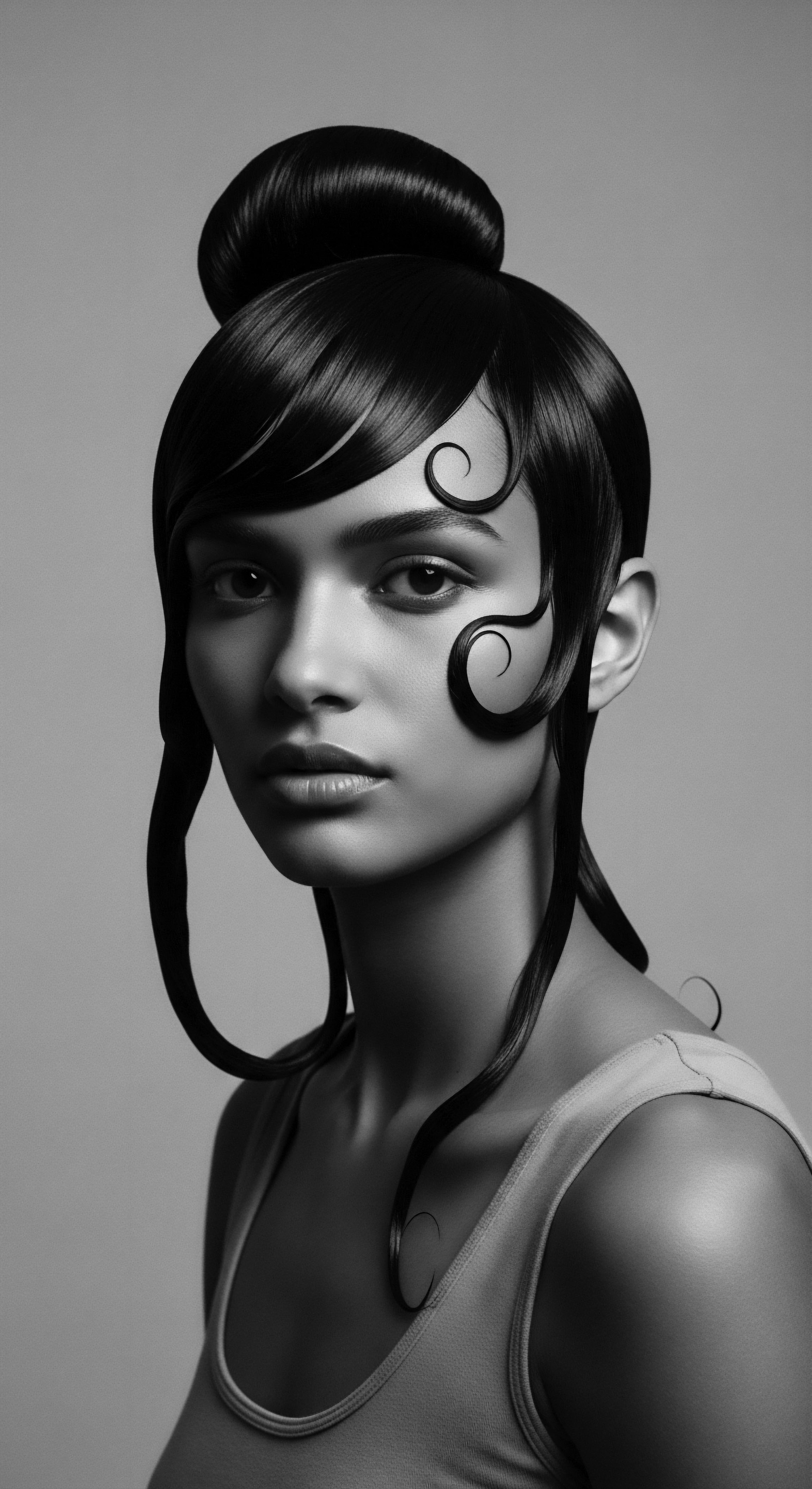
How Did Traditional Styling Techniques Evolve?
Traditional styling techniques, particularly braiding and coiling, were not haphazard creations. They were meticulously developed over millennia, born from a deep knowledge of hair’s physics and its relationship with the environment. Braids, for instance, are depicted in Stone Age paintings in the Sahara dating back to at least 3000 BCE, indicating their ancient lineage. The primary function of these styles was often protective.
By gathering strands into cohesive units, ancestral styles shielded the hair from environmental damage, minimized tangling, and reduced the need for daily manipulation, which inherently leads to breakage. This concept of minimizing manipulation remains a cornerstone of modern protective styling.
Consider the diverse forms of braids and twists across Africa and its diaspora. Each variation, whether the tightly woven cornrows or the sculptural Bantu knots, served a purpose beyond mere decoration. They acted as a physical barrier against dust, sun, and harsh elements. In West African traditions, oils and butters were frequently applied with protective styles to maintain moisture, particularly in arid climates.
This synergy between styling and nourishment created a holistic system of care. The tools used were often simple, yet highly effective, crafted from natural materials like wood or bone. These instruments were extensions of the hands that wielded them, tools for both artistry and preservation.
The enduring spirit of ancestral hair rituals lies in their profound ability to transform daily care into a communal celebration of heritage and resilience.

What Cultural Meanings do Protective Styles Hold?
The cultural meanings woven into protective styles run deep, extending far beyond their practical benefits. In many African societies, a person’s hairstyle could signify their tribe, marital status, age, wealth, or religious beliefs. The very act of styling was often a communal activity, a social gathering where stories, songs, and traditions were exchanged. This aspect fostered a sense of belonging and reinforced community bonds.
During the transatlantic slave trade, when African people were forcibly removed from their homes, their hair became a potent symbol of defiance and survival. Captors often shaved the heads of enslaved individuals, aiming to strip them of their cultural identity. Yet, the art of braiding persisted, becoming a clandestine means of communication and a quiet act of rebellion.
This history underscores the profound resilience embedded within textured hair and its styling traditions. Protective styles, in this context, were not just about physical preservation; they were about preserving the spirit, the culture, and the very memory of a people.
Here are some traditional styling types and their original functions:
- Cornrows ❉ Braids woven tightly to the scalp, originating in Africa (with depictions dating to 3000 BCE). They offered protection from the elements and symbolized tribal identity, later serving as secret communication maps during slavery.
- Bantu Knots ❉ Small, coiled buns originating from the Zulu people of Southern Africa. These styles protect the hair by keeping it tucked away and can also be used to create defined curls when unraveled.
- Hair Oiling/Buttering ❉ The consistent application of natural oils and plant-based butters like shea butter or castor oil was a fundamental practice to moisturize, condition, and provide a protective barrier for the hair, particularly in West African traditions.
- Headwraps ❉ Ancient African communities used headwraps for protection from the elements, to maintain hairstyles, and to signify social status or tribal affiliation.
The contemporary recognition of these styles as “protective” is a direct continuation of ancestral wisdom, albeit often re-contextualized for modern life. The desire to minimize breakage, retain length, and safeguard hair from external damage remains a universal pursuit, one that finds its clearest lineage in the ingenuity of past generations.
| Ancestral Purpose Protection from environmental elements (sun, dust, wind), |
| Modern Parallel Minimizing exposure to extreme temperatures and pollution |
| Ancestral Purpose Reducing breakage from daily manipulation and tangling |
| Modern Parallel Retaining hair length and promoting growth by tucking away ends |
| Ancestral Purpose Maintaining moisture with natural oils and butters, |
| Modern Parallel Using leave-in conditioners and sealing with oils to prevent moisture loss |
| Ancestral Purpose Communicating identity, status, or hidden messages, |
| Modern Parallel Expressing cultural identity and personal style, |
| Ancestral Purpose The enduring value of these practices underscores a continuous heritage of care and resilience for textured hair. |

Relay
The journey of ancestral hair practices into the contemporary realm of protective styling is a profound relay, a passing of ancient wisdom across generations. This transmission is not merely historical; it is a dynamic interplay of lived experience, cultural memory, and evolving scientific understanding. What ancestral hair care practices influenced modern protective styling? To truly grasp this, we must look beyond surface similarities and delve into the deeper mechanisms and cultural imperatives that continue to shape how textured hair is cared for and celebrated.
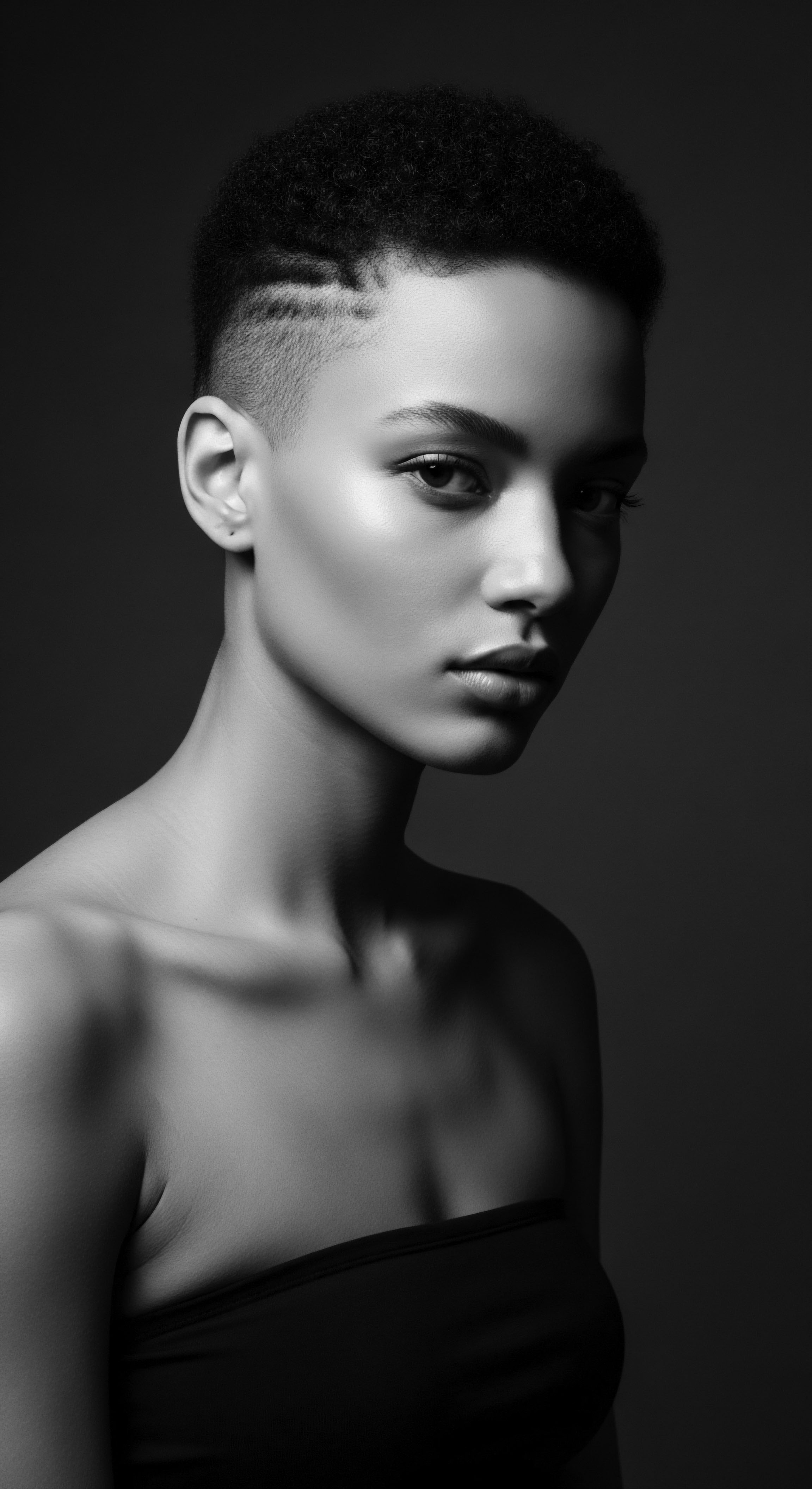
How does Ancient Wisdom Inform Contemporary Hair Science?
The efficacy of many ancestral hair care practices, once understood through observation and tradition, now finds validation in modern hair science. Consider the widespread use of plant-derived oils and butters across African communities. Ingredients such as shea butter, coconut oil, and castor oil were regularly applied to hair for conditioning and moisture retention. Contemporary research affirms the benefits of these natural emollients.
Coconut oil, for instance, with its low molecular weight, has been shown to penetrate the hair shaft, reducing protein loss and providing deep moisturization. Castor oil, revered in ancient Egypt, forms a protective lipid layer on the hair surface, helping to lock in moisture. These scientific understandings do not supersede ancestral knowledge; rather, they serve to deepen our appreciation for the intuitive brilliance of past generations.
The emphasis on protective styling itself, which minimizes manipulation and shields hair from environmental elements, aligns perfectly with dermatological recommendations for textured hair. Afro-textured hair is inherently susceptible to breakage due to its unique coil pattern and the elevated cuticle. By tucking away the hair in styles like braids, twists, and cornrows, ancestral practices reduced friction and exposure, directly addressing these vulnerabilities. This biological reality made protective styles a cornerstone of healthy hair maintenance long before the term “traction alopecia” became part of the modern lexicon.
The knowledge transmitted through generations was a practical science, distilled into actionable rituals. It allowed communities to maintain hair health and length in challenging climates and conditions, without access to laboratories or chemical formulations. The continuity of these practices, adapted and refined, speaks to their enduring scientific merit.
The historical use of cornrows as coded messages represents a profound instance of hair becoming a silent, yet powerful, tool for liberation.
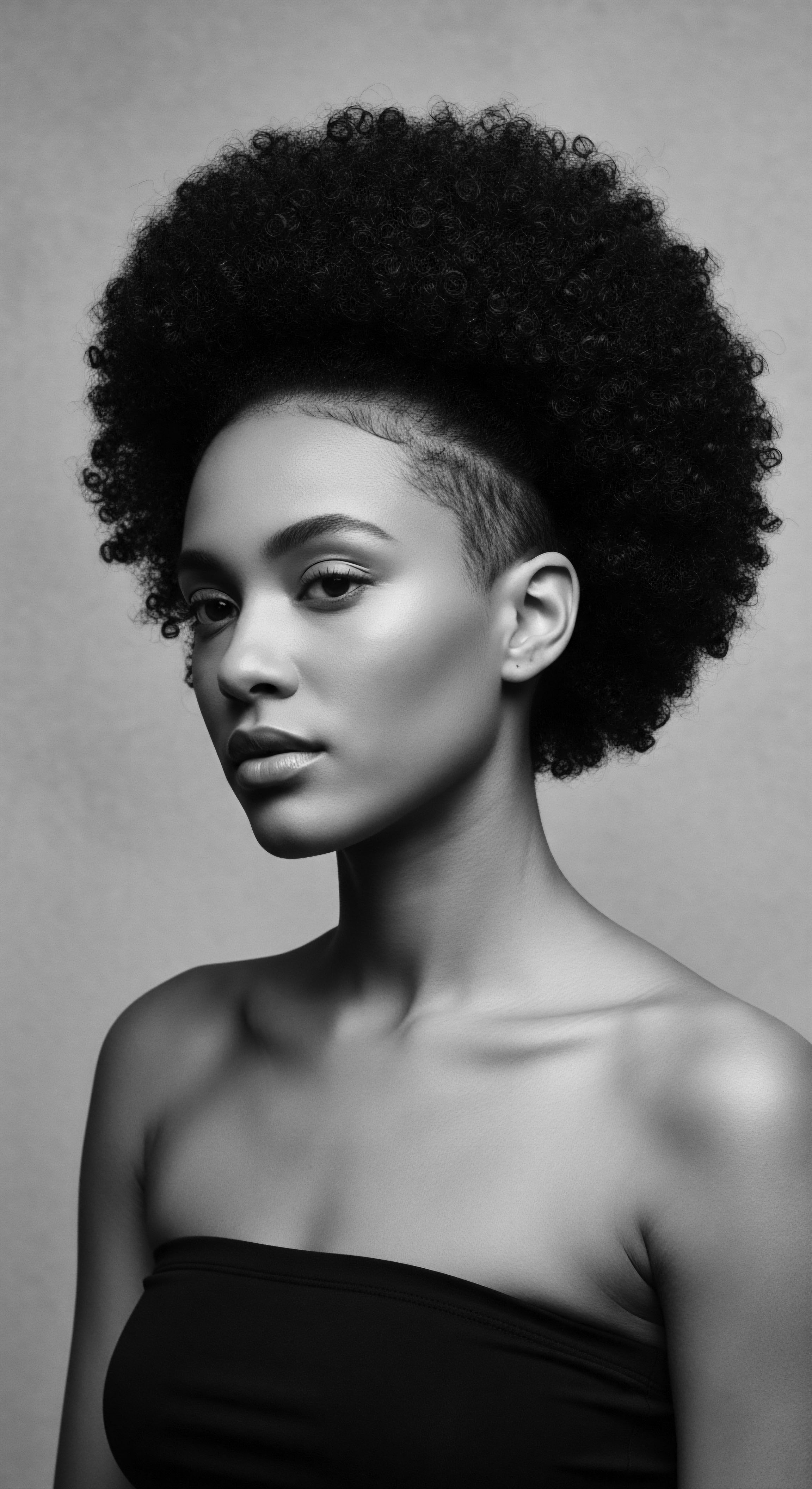
What Specific Historical Examples Illuminate This Connection?
A particularly powerful illustration of ancestral hair care’s influence, extending beyond mere physical protection, is the clandestine use of cornrows during the transatlantic slave trade. In a period when enslaved Africans were stripped of their identities and their ability to read or write was suppressed, hair became an extraordinary medium of communication and resistance.
In colonial Colombia, for instance, historical accounts and folklore describe how enslaved women braided their hair to create hidden maps and messages for escape routes. The intricate patterns of cornrows, indistinguishable to the uninitiated eye, could delineate paths to freedom, indicate safe houses, or even signal plans for uprising. One specific style, known as “departe,” reportedly consisted of thick, tight braids tied into buns on top, signaling an intent to escape. Other curved braid patterns are said to have represented roads or river systems.
Furthermore, these braids sometimes served as ingenious hiding places. Enslaved individuals would discreetly weave rice grains, seeds, or even small pieces of gold within their braided styles. These concealed provisions were vital for sustenance once they embarked on perilous journeys towards liberation, often to Maroon communities like Palenque de San Basilio, a village founded by escaped slaves in Colombia.
This practice highlights the dual protective nature of these styles ❉ not only did they physically safeguard the hair, but they also offered a profound, existential protection, quite literally charting paths to freedom and survival. This powerful narrative, rooted in the lived experiences of Black and mixed-race ancestors, is a testament to the deep resourcefulness and cultural resilience woven into the very fabric of textured hair heritage.
This historical reality provides a concrete case study for how ancestral practices transcended simple aesthetics or physical care, becoming instruments of defiance and preservation of self in the face of profound oppression. The knowledge of how to manipulate hair into these coded messages was passed down with utmost discretion, a life-saving skill that became an inherent part of the hair care ritual itself.

How do Cultural Movements Shape Hair Practices?
Cultural movements throughout history have consistently reinforced the significance of ancestral hair practices. The Natural Hair Movement, gaining significant momentum from the 1960s Civil Rights and Black Power movements and continuing strongly into the present day, serves as a powerful testament to this. This movement represents a deliberate re-engagement with ancestral aesthetics and care philosophies, directly challenging Eurocentric beauty standards that historically marginalized textured hair. During slavery and its aftermath, many African people were pressured to alter their natural hair to conform to dominant societal norms, often resorting to harsh chemicals or straightening tools that caused damage.
The conscious choice to wear natural styles like Afros, braids, and locs was, and remains, an act of self-love and cultural pride. It is a reclamation of heritage, a public declaration of the inherent beauty and versatility of textured hair. This contemporary embrace of natural and protective styles is a direct lineage from ancestral practices that valued hair as a symbol of identity, spirituality, and community. The movement has also spurred a resurgence in interest in traditional ingredients and techniques, validating the wisdom that was passed down through generations.
The legal landscape, too, is slowly catching up. Legislation like the CROWN Act, passed in various regions, seeks to prohibit discrimination based on hair texture or protective hairstyles associated with racial identity. These legislative efforts acknowledge the historical and ongoing discrimination faced by individuals with textured hair and validate the cultural significance of these styles. They further underscore the profound connection between ancestral practices and contemporary rights.
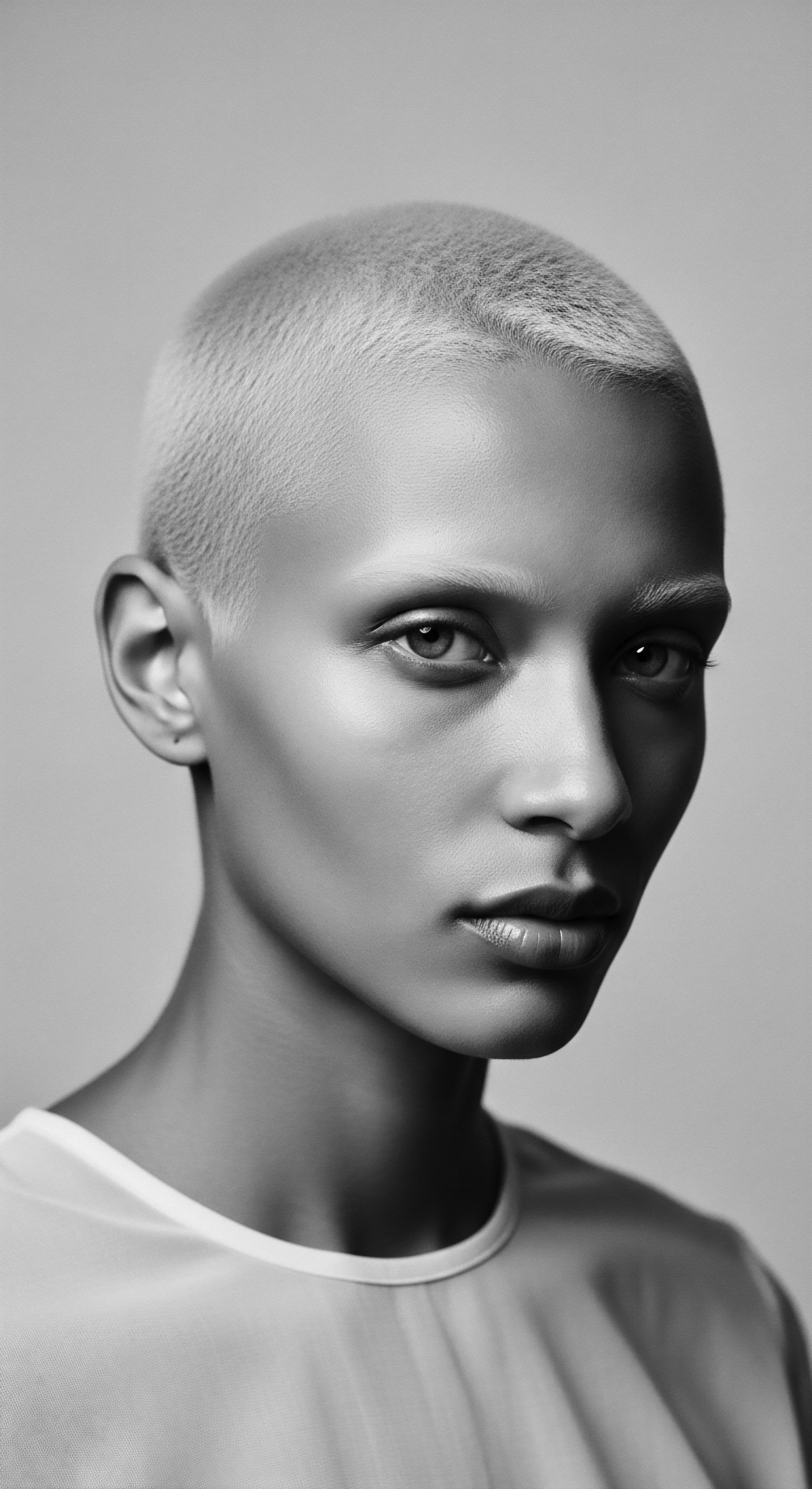
Reflection
The journey through ancestral hair care practices and their indelible influence on modern protective styling is, at its heart, a profound meditation on the resilience of heritage. Each braid, every application of oil, every careful tuck of a strand into a protective style carries the whispers of countless hands and the wisdom of generations. The very ‘Soul of a Strand’ is found not only in its biological makeup but in the layered history it embodies, in the stories it tells without uttering a single word.
What ancestral hair care practices influenced modern protective styling? They bequeathed a profound understanding of hair as a living entity, deserving of gentle hands and natural nourishment. They gifted us a legacy of styles that do more than adorn; they shield, they communicate, they preserve. The protective styling of today, whether it be intricate cornrows or the simple twist-out, is a direct echo of ancient ingenuity, a testament to the enduring power of Black and mixed-race communities to adapt, to resist, and to celebrate their unique beauty against all odds.
This continuous thread of care, spanning continents and centuries, reminds us that our hair is a vibrant archive. It is a symbol of continuity, a physical manifestation of an unbroken lineage of strength and creativity. To engage with protective styling is to participate in this living tradition, to honor the ancestral hands that first taught us the profound art of caring for our crowns. It is a commitment to not just healthy hair, but to a deeply rooted heritage, a future unbound, where every coil and curl finds its luminous freedom.

References
- Allen, Maya. “Braids? Oh, We Go Way Back.” Byrdie, 2021.
- Fletcher, Joann, and Francesco Salamone. “An Ancient Egyptian Wig ❉ Construction and Reconstruction.” Internet Archaeology, no. 42, 2016.
- McCreesh, Natalie, et al. “A New Method for the Analysis of Hair Coatings on Mummified Remains.” Journal of Archaeological Science, vol. 38, no. 12, 2011, pp. 3676–3681.
- Oforiwa, Alice. “The History and Culture of African Natural Hair ❉ From Ancient Times to Modern Trends.” AMAKA Studio, 2023.
- Oriowo, Donna. “Braiding Is More Than a Protective Hairstyle—It’s a Black Mothering Tradition.” Parents, 2025.
- Tharps, Lori L. and Ayana D. Byrd. Hair Story ❉ Untangling the Roots of Black Hair in America. St. Martin’s Press, 2001.
- Walker, A’Lelia Bundles. On Her Own Ground ❉ The Life and Times of Madam C. J. Walker. Scribner, 2001.
- Wilderness Safaris. “The History & Meaning of Head Wraps Across Africa.” Wilderness, 2015.
- Williams, Crystal. Protective Hairstyle. Wikipedia, 2024.
- Yee, Alisha. “The Cultural Significance of Braids.” Alicia Tenise, 2019.
